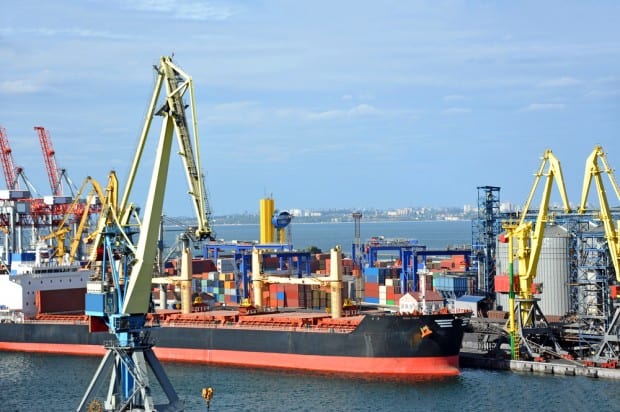The many models of investing: Special situations


In my last post, I shared about the many models of value investing and how the main “predictable” model most new investors use follow a very ideal scenario that most companies simply do not fit.
In reality, investment ideas come in many shapes and forms and may present themselves to you in many, many ways. Often they might come to you in situations that are highly unique and time sensitive – hence the term special situations investing.
What is special situations investing?
A special situation is a particular circumstance that has affected or could affect the value of a company’s stock. Oftentimes, the underlying fundamentals of the stock might not pass the typical value investing criteria but the special situation itself provides a nice opportunity for investors to profit from the situation.
The investments are usually not long term in nature; once the special situation has passed over and profit has made from the change in valuation in the company’s stock, investors usually exit the play (unless there are long-term fundamental reasons to stick around).
There are many special situations in investing out there, but right now I will only focus on 4 of which I am most familiar and proficient in:
1. Market inefficiencies
We all know the stock market can be grossly inefficient. A fair company with unstable fundamentals could be trading high because of the hype surrounding its products or a fundamentally solid company could be underpriced simply because it has gone under everyone’s radar. And in times when you do spot a gem like that, it’s time to take action.
One way to spot if the market is inefficiently pricing a company is by comparing that company with its industry peers. If a company has better fundamentals and a superior business model compared to its competitors but is priced lower in terms of P/E, then something is up and you may want to dig a little deeper.
If your research throws up no reason why the superior company is being priced cheaper than its peers, it could very well be the market pricing the stock very inefficiently – giving you a great opportunity to take advantage of the situation.
I’ll give you one example:


Back in 2011, we came across this company called Hartalega (HART:MK) which is listed on the Kuala Lumpur Stock Exchange. Hartalega is the worldwide leader in nitrile gloves – the kind of gloves you usually see doctors and nurses wearing in the hospitals. Not only are they the market leader in nitrile gloves, they’re also its lowest cost producer. As such their profit margins are nearly double their nearest competitor, Top Glove.
The funny thing is Top Glove was trading at a P/E of 20 while Hartalega, which in my opinion was a more superior company, was trading at a much lower ratio of 13. We delved deeper into our research and found that Hartalega was fundamentally rock-solid and had no reason to be trading at those levels. In fact, it should have been commanding a P/E of 20 like Top Glove and most of their peers in the same industry. Needless to say, we invested in Hartalega once our analysis was complete.
2. Fallen angels
A fallen angel is a company that has great fundamentals and been doing exceedingly well over the past many years. However due to a temporary mishap or misjudgement, the company’s short-term results are greatly affected and it stock price plummets, sometimes by more than half. In cases like these when the stock price falls so drastically, it could present a huge opportunity to pick up some stock at deeply undervalued prices.
But there are a few things you need to take note of:
- This mishap or mistake must be temporary in nature and not harm the long-term fundamentals and growth of the company
- You must find out if the company is able to survive this mishap, emerge from it unscathed and return to its former glory in due time
- Find out what the management is doing to correct the mistake or handle the mishap and whether they are redressing it effectively
- You must focus on the management and financials of the company. If the company can take the hit financially and the management is competent to see this through, you might just see this fallen angel emerge from the ashes like a phoenix.
- Remember, there is a very fine line between fallen angels that are great investment opportunities and those that are headed straight towards bankruptcy
Here’s another personal example:
I’ve been following this company called Armstrong Industrial Corporation (ARMS:SP) for some time since 2010. Armstrong is a foam and rubber components manufacturer specializing in noise and vibration reduction for the automotive and electronics industries. If you’re asking how I ever got interested in a company like that in the first place, it’s because Armstrong was a client I served before: I was staying within my circle of competence.
Anyway, Armstrong’s fundamentals were pretty solid and its business model had a pretty decent economic moat that I liked. Revenue, profits and the main key ratios were all looking good until this happened:


The 2011 Thailand Floods hit parts of Bangkok and Armstrong’s factories were severely inundated. As a result, profits dropped by more than half and its stock price from a high of 48 cents dropped to 21 cents in the aftermath of the floods.
Things were looking pretty bleak but this was a temporary setback for Armstrong from which it could recover fully. The company was financially robust enough to handle the natural calamity and its long-term fundamentals and business model remained intact.
Sure enough, Armstrong recovered in due time; it’s stock steadily rising in 2012 before it was bought over by a private consortium at 40 cents per share and delisted from the exchange. As aside, I made 47.38% returns on Armstrong (inclusive of dividends) in the two years I was invested in it.
3. Restructurings
A restructuring is a significant modification to the debt, operations or structure of the company. Usually this happens when the company is facing major problems or financial difficulties which a restructuring might solve.
One common thing I see in some companies is that they have a habit of diversifying too widely into non-core businesses. Sometimes it works out fine, but not always. And when it becomes clear that the company is too broadly diversified and its resources are stretched too thin and profits are suffering, a restructuring might be the only solution to get the company back on track.
For this to happen, the management needs to have the will to divest its non-core business assets and simply knuckle down on growing its core business better. When evaluating a restructuring situation, you need to focus on the business and management quadrants of your analysis.
Ask yourself these questions:
- Is the company’s core business strong enough by itself to see future growth prospects develop?
- What are the actions management is taking during the restructuring? Are they cutting costs or streamlining operations more efficiently?
- Is the management aligned with shareholders through the course of their actions?
- If there is excess cash, are they paying dividends back to shareholders or executing share buybacks to increase shareholder value?
There will be many more questions you can ask in any given situation. The key is to know if the management has the shareholders’ interests at heart and they’re doing what it takes to fix the company right.
I recently wrote an investment report which case studies one company which divested all their non-core business assets and re-focused on its core business. Its stock price grew 243.5% in a little over two years. Just goes to show how effective a restructuring can be if done right!
4. Distressed industries


The final situation I will cover is the distressed industry. A distressed industry is an industry that has hit its own economic recession. Revenue, profits and growth are down everywhere and companies within the industry could even be going bankrupt. The reasons for the distress could be manifold: supply & demand issues, a fall in trade, high interest rates, a credit crunch, etc.
Whatever it is, it is important that the downturn is a cyclical one and not the permanent death of the industry (CDs or typewriters, anyone?). Because once the inherent issues have righted itself, the industry will re-find its equilibrium and almost always go upwards on another economic boom, before it comes back down again in the future.
When an industry is in distress, the companies in the industry will be faced with falling revenue, profits (losses even) and possible liquidity issues – all of which will drive their stock price down. And this special situation is a massive opportunity for you to pick up some great stocks at severely discounted prices.
But you can’t just invest in any company simply because it is currently in a distressed industry. You need to pick the right horse or you might pick one that goes bankrupt and end up losing all your money.
Here are the important points you need to take note of when investing in a distressed industry:
- You need to start by analysing the economics of the industry in question. Find out how its economic cycle runs, what affects it and where in the cycle it is currently at. Needless to say, you want to buy when the cycle is at or near rock-bottom.
- When analysing the companies in the industry, focus more on the management and financials of the company rather than the business and valuation quadrants. The business models of all the companies could all be the same and valuations are already pretty cheap. What is important is the whether the company has a strong management team and the financials to ride through the downturn comfortably.
- Does the management has experience successfully navigating the booms and busts of the industry before? Do they have a contrarian approach to the industry cycles and are savvy market timers of the cycle itself? Is the management shareholder-aligned and trustworthy?
- Does the company have a strong balance sheet with a sizeable cash hoard and low debt? Can they survive when competitors around them are going bankrupt?
- Are they able to grow their revenue and profits to their former levels (or higher) when the cycle turns around?
We recently researched a currently distressed industry that’s entered its sixth year of recession but could be poised to turn around soon. Multiple companies are going bankrupt in that industry but there a handful that might be a multi-bagger investment once the turnaround gets going.
A distressed industry is a very exciting special situation because there could be many companies worth taking a look at within an industry; just make sure you know how to pick the right ones!
The Fifth perspective
As you can see, investing doesn’t fit always fit a nice, clean template for you to pick, select and invest in companies. The investment world is so fluid and ever-changing, and many special situations can manifest to present investment opportunities you might not see at all typically. The only thing is whether you can spot them!
In my next post, I will cover one more area of investing that is one of the simpler and more straightforward types to examine: the asset play.




You guys really open up my eyes to stock investing because I did not know there are so much profound knowledge in it. Keep up the great job! : )
Hi Pete, thank you for your kind words! It is great to hear that we helped open your eyes further to the world of investing. That’s a lot to learn but exciting at the same time!
In the meantime, we’ll continue to write more articles like this to enrich our readers and we hope you continue to enjoy them! 🙂
Top Glove is more of a natural rubber gloves producers, while Hartalega is a synthetic rubber producers like a couple of their competitors.
There is some cost and material difference in the making of those gloves.
Top Glove was a world Top 2 rubber gloves producers back in 09/10.
You’re absolutely right there. We felt both companies served the same market but Hartalega had the better product due to the steady switch to nitrile gloves in the medical industry. So the fact that it was cheaper (P/E wise) than Top Glove made us sit up and take notice.
When I clicked the link to the distressed industry (that’s entered its sixth year of recession), it gives an error 404. Please advise.
Hi Andy,
Thanks for checking! This article was written in 2016 and the link you mentioned is no longer available 🙂